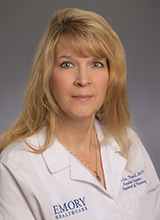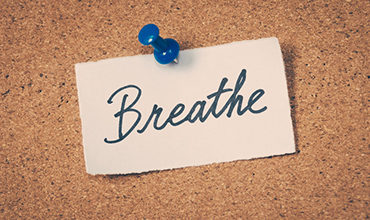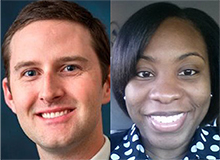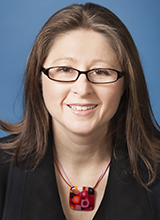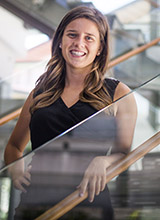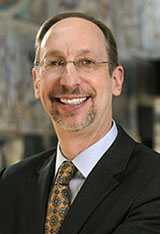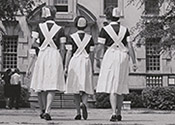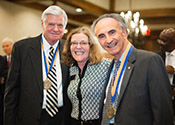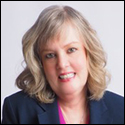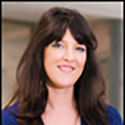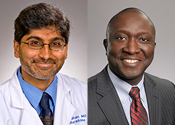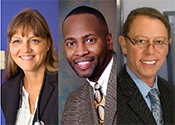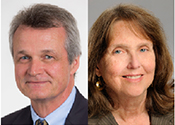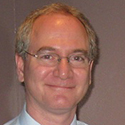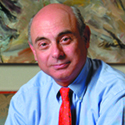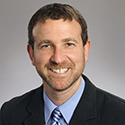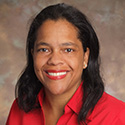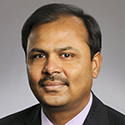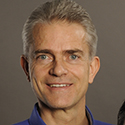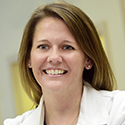

Calming stress in the call center |
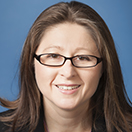
New perspectives on Ebola, other viruses |
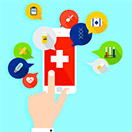
Turning to students for health app needs |
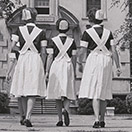 In brief |
|||||
| November 18, 2016 | ||||||||||||||||||
Whack-a-mole: Reducing impact of rising drug prices on hospital costs
A previously inexpensive workhorse drug suddenly increases in price. This scenario, highlighted in recent public controversies over the prices of the antiparasite drug Daraprim and EpiPen autoinjectors, has been playing out with increasing frequency over the past few years.
At a November 2 Emory Center for Ethics conference on drug development and pricing, pharmacist Collin Lee, assistant director of clinical and educational services for Emory Healthcare, explained how she and her team manage the impact of increasing drug prices on hospital costs. While other speakers explored nationwide economic trends and regulatory or ethical issues, Lee's concerns were more immediate and close at hand. When it comes to drug price increases, she says, hospital leaders want to know: "What are we going to do about this?" Lee is part of the Pharmacy and Therapeutics ("P and T") committees for Emory University Hospital and Emory University Hospital Midtown. She described work in this area as being somewhat like a game of "whack-a-mole," responding to drug increases with creative tactics to keep the hospitals' costs at bay. She and her colleagues have used a variety of tactics, such as repackaging to reduce waste and managing provider demand. Take, for example, the synthetic hormone vasopressin, which is used for many indications, such as increasing blood pressure when a patient is in shock. Available as a generic product for years, vasopressin's price increased dramatically in 2014 after Par Pharmaceuticals conducted efficacy studies on a reformulated version and obtained approval for this version from the FDA. To reduce waste, vasopressin is being removed from hospital emergency "crash carts," where it would remain unrefrigerated and need to be discarded sooner. In addition, pharmacists now administer the drug in much smaller IV doses. This requires that nurses change IV bags more frequently and that they understand revised dosage concentrations (a patient safety risk), says Lee. "Because vasopressin was so inexpensive before the price increase, it wasn't even on our radar to assess how much we might be wasting," she adds. Other major medical centers have taken similar measures with the drug, according to Bloomberg News. Managing demand was used as a tactic for intravenous acetaminophen, which has become more popular of late as part of a nationwide push to de-emphasize opioids in pain management. After the price of IV acetaminophen tripled in 2014, Emory's hospitals established a patient scoring system, coupled to electronic ordering. Only patients who met certain criteria, such as obstructive sleep apnea or contraindications for non-steroid anti-inflammatory drugs, would be approved. This helped put a ceiling on rising costs. To nudge doctors and other providers toward fiscally conservative choices, managers have also experimented with subtle hints, like dollar signs ($$$) next to expensive antibiotics in the electronic ordering system. In addition, Emory critical care specialists established temporary financial incentives for teams to limit the use of expensive supplies such as fluids containing albumin. Lee and her team have been resourceful in dealing with other types of medications as well. There are 11 different types of antivirals for hepatitis C, says Lee, each customized to individual patient needs and viral genotypes. And they're available in bottles of 30 tablets that cost as much as a new car. That's why it's cost-effective for Emory to send a courier to a patient's home to pick up their own such medications. "I can't have all 11 sitting on my shelf at $30,000 per bottle," Lee says. The economic forces that drive increasing costs, such as FDA re-approvals of old generic drugs and mergers that reduce competition, will likely continue to perpetuate the need for similar management efforts, but Lee and her team are ready. "I could come up with 50 more examples," she says.—Quinn Eastman Calming stress in the call center
One patient calls the Emory Clinic to request an appointment for a routine colonoscopy. Another contacts Winship to find a doctor after receiving a cancer diagnosis. Yet another rings a primary care office in North Georgia because they are not feeling well. Those patients may not realize that their calls—and those for all Emory Healthcare outpatient services—are actually routed to the Emory Healthcare Call Center. More than 220 employees field some 15,000 calls a day, most of them from an expansive space on the fifth floor in Decatur Plaza.
The team members who answer these phones are often a patient's first contact with Emory. "They are our voice," says Alan Kramer, director of patient access at Emory. "They are representing our institution, our brand, and our doctors." New perspectives on Ebola and other viruses
In some respects, Anita McElroy is indebted to one of the viruses she has encountered. Several years ago, during a postdoctoral fellowship at a U.S. Army research facility in Maryland, she was accidentally exposed to hantavirus and was sent to the hospital for observation. "Fortunately, I didn't get sick," says McElroy, a pediatric virologist. "But being in the hospital made me want to know more about the clinical aspects of the diseases I was studying so I could be a better scientist. So I went back to school and got an MD." She studied medicine at George Washington University, where she made another discovery. She preferred working with pediatric patients. "Parents want the best for their kids all the time," McElroy says. "When you tell them they need to do something for their child's health, they do it. So I fell in love with pediatrics. And that's what brought me to Emory." It's been a good fit. McElroy is an attending physician in the infectious disease service at Children's at Scottish Rite. She spends most of her time in a lab at Emory and at the Viral Special Pathogens Branch at the CDC. In 2014, when four patients were treated here for Ebola virus disease, McElroy was the only Emory clinician qualified to handle the patients' samples in the CDC's Biosafety Level 4 (BSL4) lab. Thus McElroy became the liaison between Emory University Hospital's Serious Communicable Diseases Unit and the CDC. "This was a phenomenal opportunity for all of us because no one had collected serial samples from Ebola patients before," McElroy says. "That wasn't doable in West Africa, where they could take blood samples from patients only for diagnostic testing. There was no sampling over time to evaluate electrolytes and cell populations to help understand how to support patients clinically." McElroy continues to collaborate on Ebola research involving the SCDU, the Emory Vaccine Center, the CDC, and other partners across the country and is the lead author on two published studies. In the first study (published in 2015), the four Emory patients' immune systems showed strong signs of T and B cell activation, a finding that ran counter to previous assumptions and that provided new insight into vaccine design. "We found that patients' immune systems were activated in response to Ebola," McElroy says. "Until then, everyone thought that Ebola shut down the immune system and that's why people got so sick." Results from the second study (published in 2016) yielded clues as to how some people survive the disease. Using samples from the seven patients treated at Emory and University of Nebraska Medical Center, scientists tracked 54 immune system biomarkers to determine which ones correlated with less severe disease. The study was the first to use samples taken from patients during the course of their entire illness and into their recovery. "The biomarker study showed higher levels of several proteins in patients who had moderate disease," says McElroy. "We were able to say, 'Look, this response is much better in these patients. This might be an area we can target for future studies.' " McElroy will soon complete a study on a patient treated for Lassa fever at EUH last year and is partnering on studies of Zika virus. In an earlier study, she explored why children and adults have different immune responses to Ebola virus. Working in the BSL4 lab at the CDC, she examined blood serum samples (45 children and 50 adults) collected by the agency during the 2000–2001 outbreak in Uganda. The children's samples had higher levels of RANTES, a protein that stimulates T cell responses. "In the Uganda and West Africa outbreaks, school-age children (ages 5 to 14) did best in terms of survival," McElroy says. "This phenomenon is not unique to Ebola. We've seen it with TB and other diseases. The kids in Uganda who did well had higher levels of RANTES, which we didn't see in the adult patients. That led us to hypothesize that those kids did well because they had better T cell responses to the virus. What we need now are better animal models to tease out the role of these different biomarkers."—Pam Auchmutey Turning to students for health app needs
At the Rollins School of Public Health, a student-run organization is out in front in the emerging field of mHealth, which uses mobile phones and tablets to support public health education and interventions. Through the Rollins mHealth Collaboration (RmC), mHealth-savvy students are teaching other students how to build and use a wide variety of applications, how to connect to a local SMS gateway provider, and how to devise a user interface. The sessions, which meet every other week for two hours, end with hands-on practice. |
| From the Executive VP
Upcoming issues in the Georgia legislature
The 2016 presidential election was certainly one for the record books. We're not yet sure how the federal agenda will take shape or how it will affect us, but we do anticipate several key issues that will be addressed at the state level next year. The 2017 State Legislative Session is being called "the year of health care." We expect to see continued attempts to dismantle the Certificate of Need program, and the Hospital Provider Payment Program, commonly referred to as the "bed tax," will be up for renewal in 2017. We expected that the legislature would consider allowing the Governor to negotiate a Medicaid expansion proposal with the Centers for Medicare and Medicaid Services, but it's currently unclear what those negotiations will look like under the new federal administration. We will keep you updated as these and other legislative issues take place in the new term. Meanwhile, thanks for all that you do for our Emory community and the people it serves.
100 years of nursing
A medical journal from World War I kept by Nell Hodgson Woodruff and reproductions of Florence Nightingale’s letters held by Emory’s Pitts Theology Library are among the artifacts featured Emory Medalists
Earlier this month, Emory alumni Charles H. (Pete) McTier and S. Perry Brickman were awarded the Emory Medal, the university's highest alumni honor. Among other leadership roles, McTier, an Emory emeritus trustee, is a current member of the WHSC Board. He is also past president of the Robert W. Woodruff Foundation and affiliated family of foundations, which have played active roles in many of Atlanta's major civic initiatives. A retired oral surgeon, Brickman is past president of the Georgia Society of Oral Surgeons and past member of the Georgia Board of Dental Examiners. Read more. Retreat for patient and family advisers
On November 12, the Office of Care Transformation held a retreat for patient and family advisers (PFAs), volunteers who work with clinicians and staff to improve the patient experience in Emory's clinics and hospitals. Formed in 2008, the group today has 200 PFAs who provide input on various aspects of health care, from transplant and brain health to clinic registration and the new EUH tower. At this year's retreat, 91-year-old PFA Marv Trott showed how he uses a new PFA data management system on the EHC website. "We want to impress upon our leadership how much work our PFAs do," says Michelle Gray, director of care transformation. "The database will help us collect and identify data on hours PFAs volunteer and committees they contribute to." While other hospitals have similar PFA programs, few engage volunteers in so many ways. "Emory's program is highly developed," says Gray, who organized the retreat with program coordinator Michelle Brown. EHC leaders attending the retreat included Dane Peterson, Bryce Gartland, Nancye Feistritzer, Marilyn Margolis, and Sharon Pappas, EHC's new chief nurse executive. Emory/CDC launch free online course
The RSPH's Center for Humanitarian Emergencies and the CDC are launching a new online course Nov. 21: Health in Complex Humanitarian Emergencies. The course is free and open to the public, but participants may purchase a certificate for a nominal fee. Read more. EJCH partners with pharmacy to improve care transition
Emory Johns Creek Hospital has partnered with Lily’s Pharmacy to provide special pharmacy services to patients transitioning from hospital to home. Patients can opt into the free service if they take more than five medications or have been hospitalized more than once in the past 30 days. EJCH CQO Hasan Shabbir says the service helps close the gap in an often vulnerable post-discharge period for many patients and helps reduce readmission rates. CMO Adedapo Odetoyinbo agrees: "Our medication reconciliation assistants identified that the highest risk patients—elderly and those on multiple medications with limited mobility—did not always fill their prescriptions after leaving the hospital." According to the pharmacy, more than 130 pharmacy interventions, including more than 30 major life-saving ones, have been made since the program started. Read more. Notable
The new Clinical Scholars national leadership program selected Hope Bussenius (nursing), Charles Moore (otolaryngology), and David Reznik (infectious diseases) as part of its first cohort of 30 innovators to collaborate in a project to reduce the burden of poor oral health in Georgia. Read more.
Vince Dollard has been appointed interim senior VP for communications and public affairs for Emory University, and Holly Korschun has been appointed interim associate VP for health sciences communications.
Shawn Hochman is serving as interim chair of Physiology, replacing Doug Eaton, who stepped down after serving eight years as chair and more than two decades as deputy chair.
Emeritus EVPHA Michael M.E. Johns will receive an honorary Doctor of Science degree from the University of Michigan at its winter commencement ceremony. Read more. Johns is also the inaugural holder of the Michael M.E. Johns, MD, Chair in Health Policy, recently funded by the O. Wayne Rollins Foundation. Read more.
Adam Marcus (Winship) was named to the Atlanta Business Chronicle's 2016 "40 under 40" list.
Tammie Quest is president-elect of the American Academy of Hospice and Palliative Medicine.
Suresh Ramalingam (deputy director, Winship) holds the Roberto C. Goizueta Distinguished Chair for Cancer Research. Read more.
Erwin Van Meir (Winship, cell biology) received the Phil Jory Research Award from the Southeastern Brain Tumor Foundation.
Sharon Vanairsdale (program director, Serious Communicable Diseases Unit, and adjunct professor and DNP student in the nursing school) received the Magnet Nurse of the Year Award for Exemplary Professional Practice from the American Nurses Credentialing Center. Read more. |


